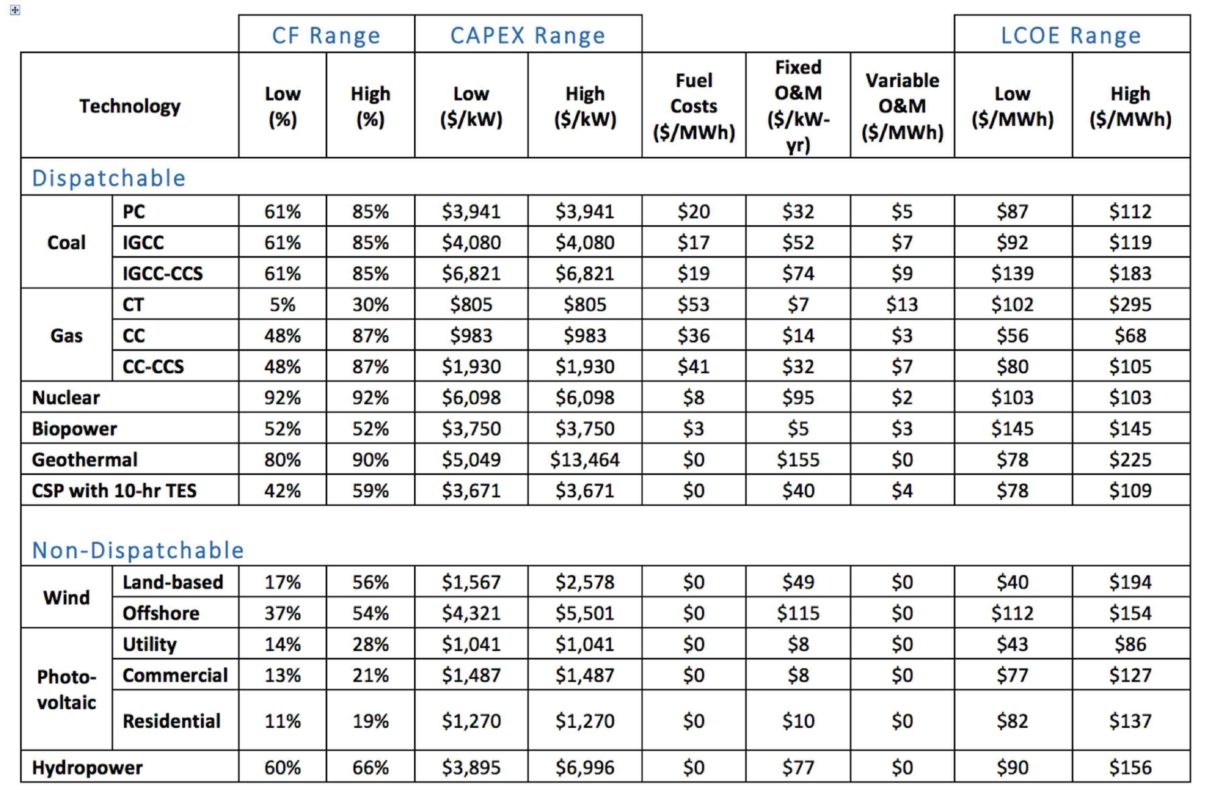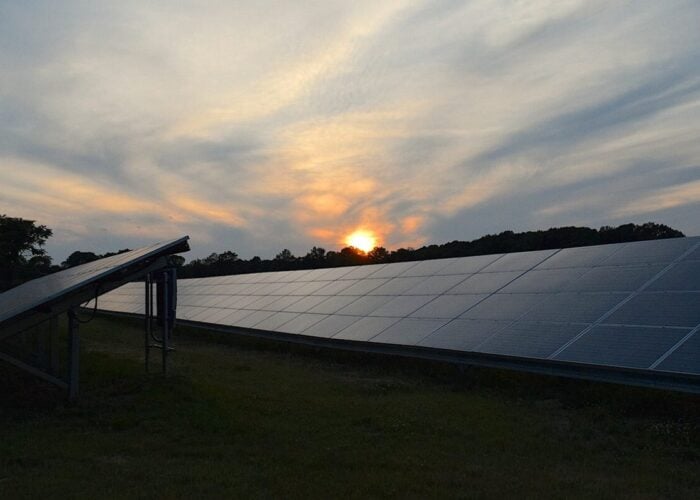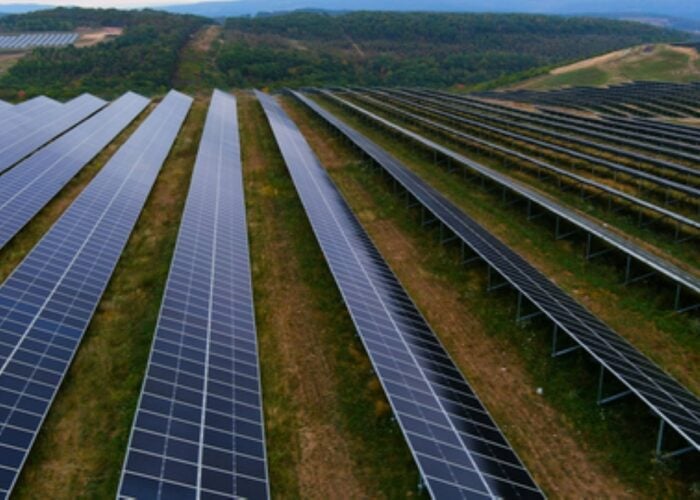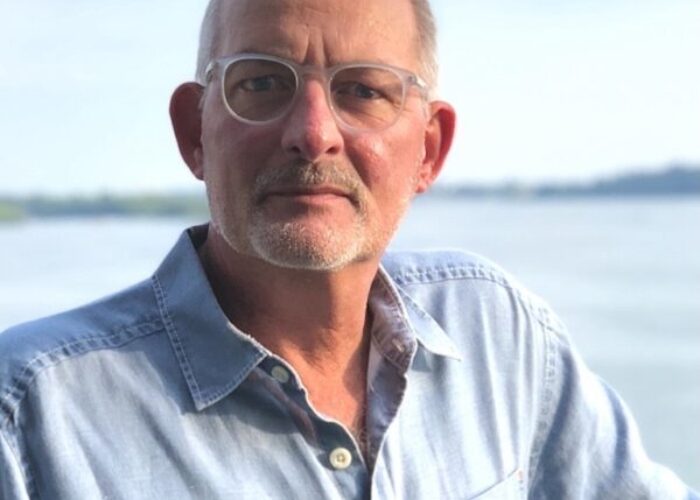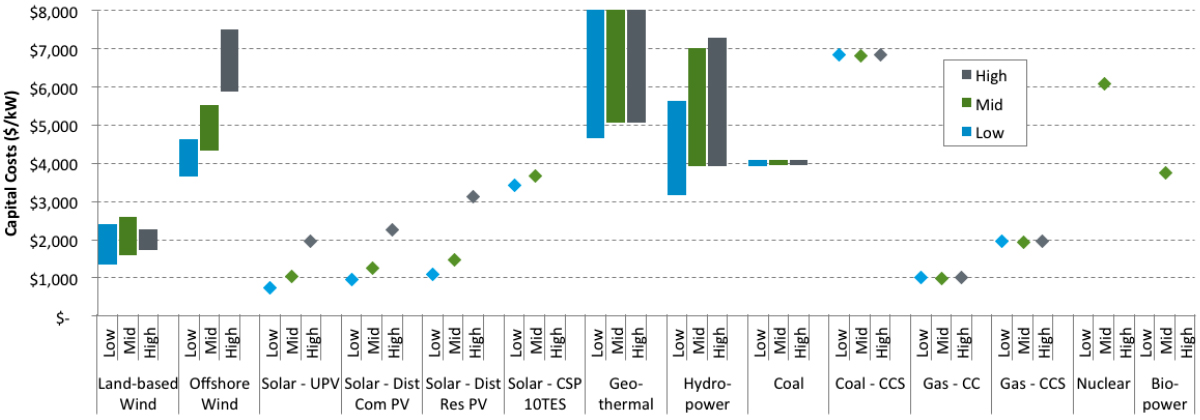
Solar ranks lowest in terms of projected Capital Expenditure (CAPEX) for electricity generating technologies in 2030, according to the National Renewable Energy Laboratory’s 2016 Annual Technology Baseline (ATB).
Utility-scale, commercial, residential PV and concentrated solar power (CSP) all rank lowest in terms of CAPEX as compared to onshore wind, offshore wind, geothermal, hydropower, coal, gas, nuclear and bio power for 2030. The solar ITC and PTC for wind were not included in any of the figures in the ATB.
Try Premium for just $1
- Full premium access for the first month at only $1
- Converts to an annual rate after 30 days unless cancelled
- Cancel anytime during the trial period
Premium Benefits
- Expert industry analysis and interviews
- Digital access to PV Tech Power journal
- Exclusive event discounts
Or get the full Premium subscription right away
Or continue reading this article for free
For 2030, utility-scale PV has a capex of US$1,041/kW and a levelised cost of electricity (LCOE) range of US$43/MWh to US$86/MWh. Commercial PV capex is forecast at US$1,487/kW with a LCOE range of US$77/MWh to US$127/MWh. Residential PV capex is US$1,270 with a LCOE range from US$82/MWh to US$137/MWh.
Solar is considerably cheaper than offshore wind, for example, which has a 2030 capex ranging from US$4,321/kW to US$5,501/kW and a LCOE ranging from US$112/MWh to US$154/MWh.
In terms of how much lower solar could realistically go based on current trends, the ATB only includes how low current projects get rather than the lowest cost the technology could feasibly achieve. However, NREL data assumes that after 2025, US prices will be on par with the median of global price projections. But in general, the increased efficiency of solar modules and increased production line throughput is expected to decrease CAPEX, as well as improved power electronics affecting balance of systems and decreased installation costs and margins.
